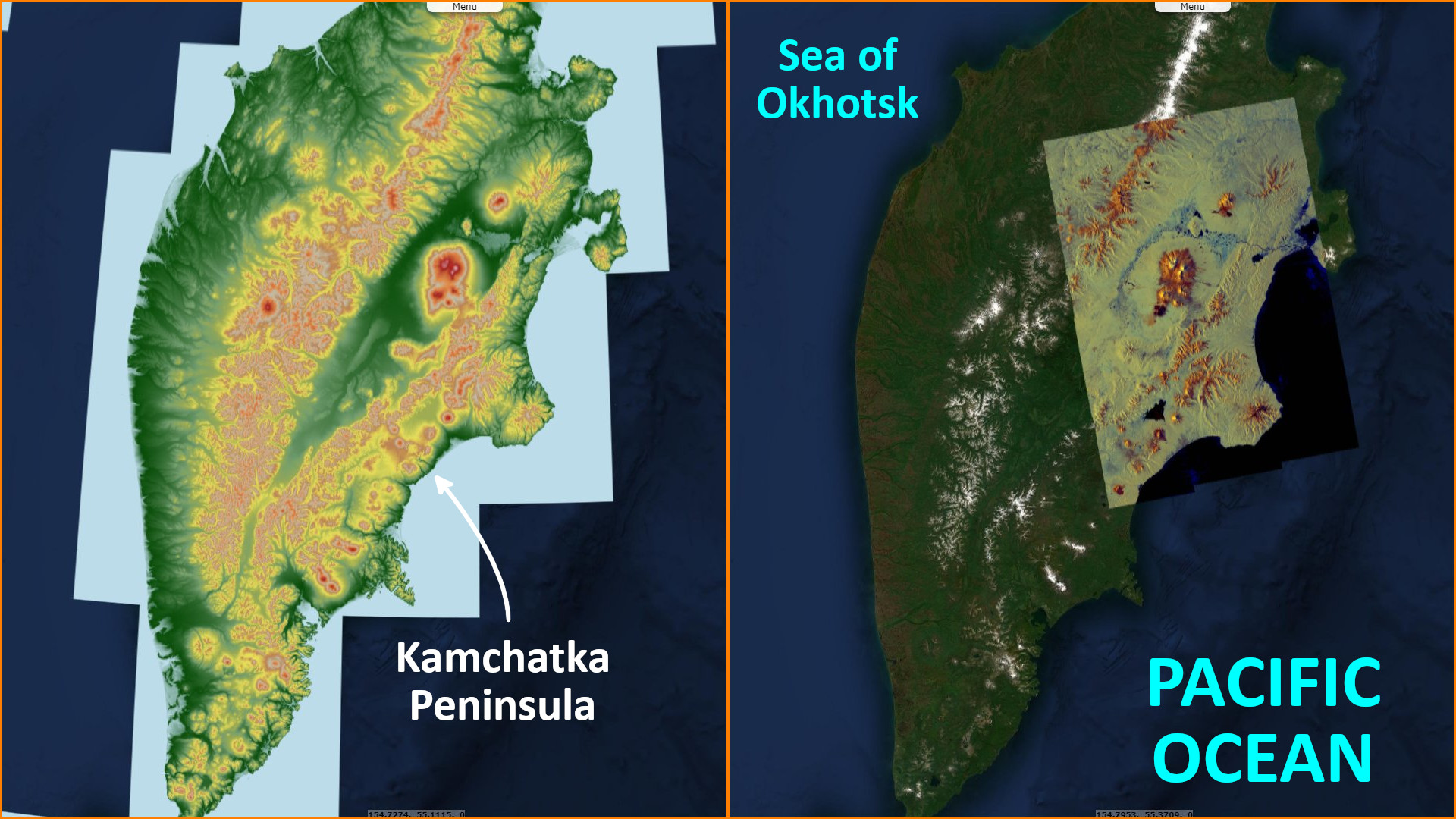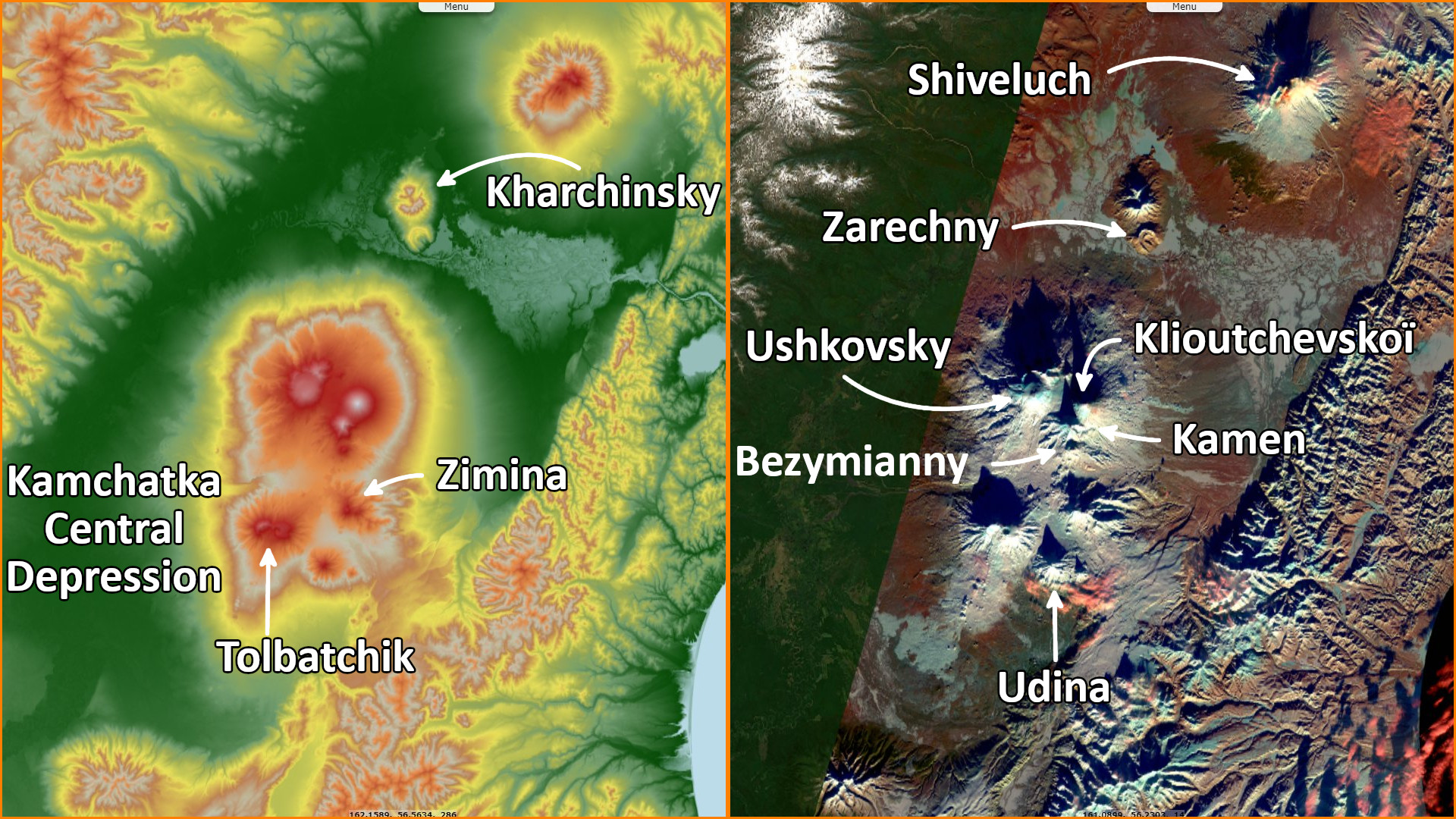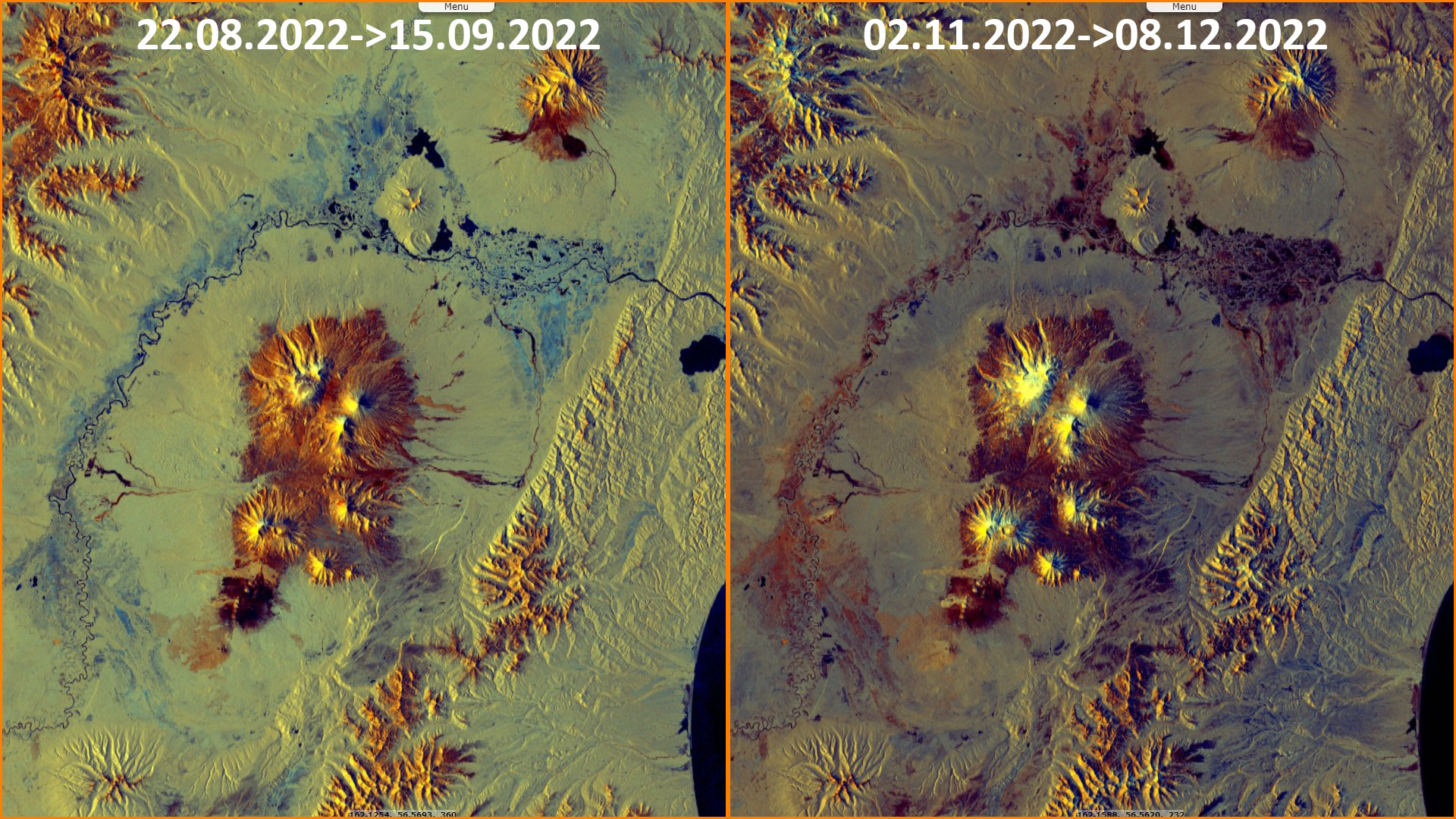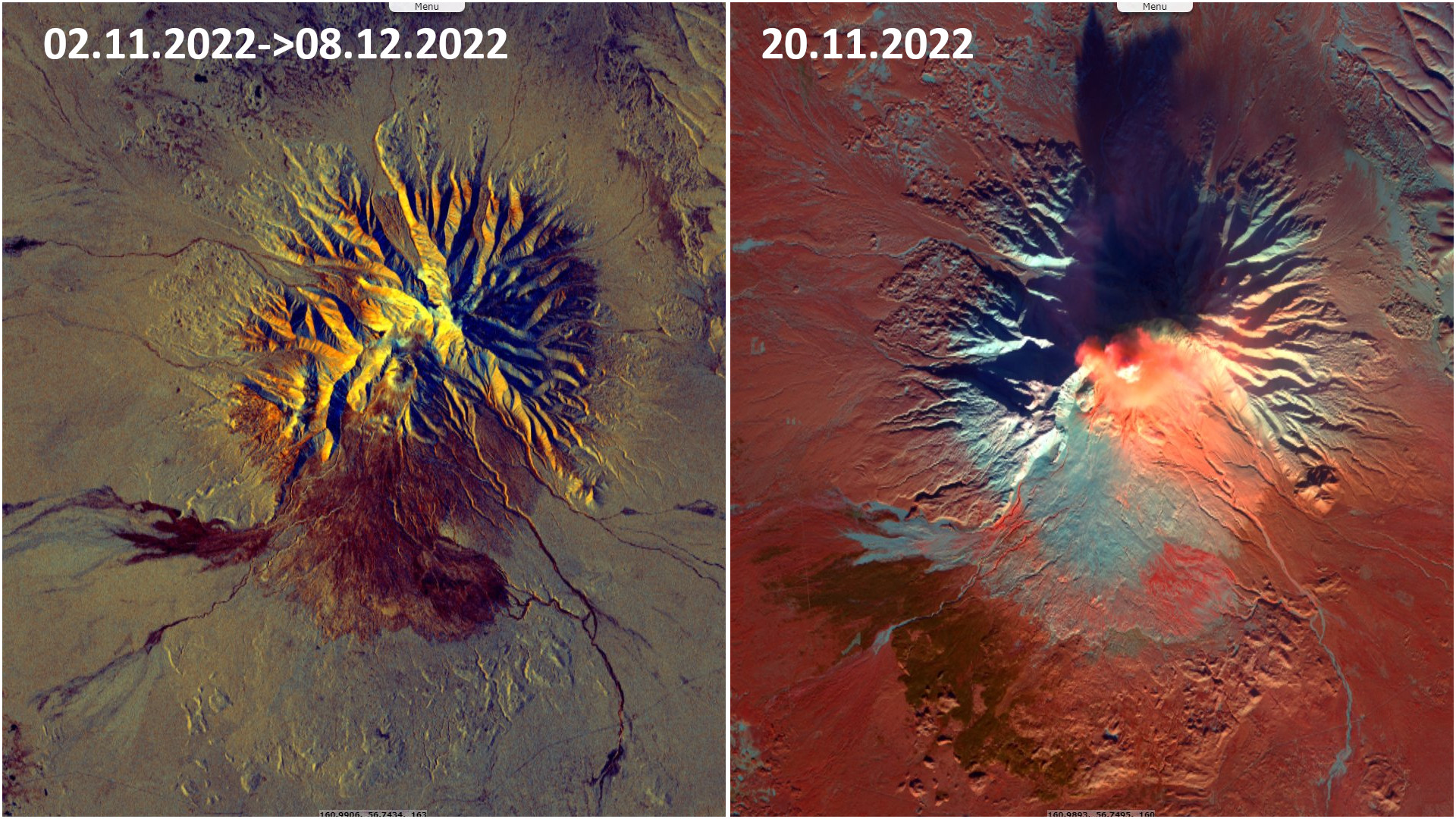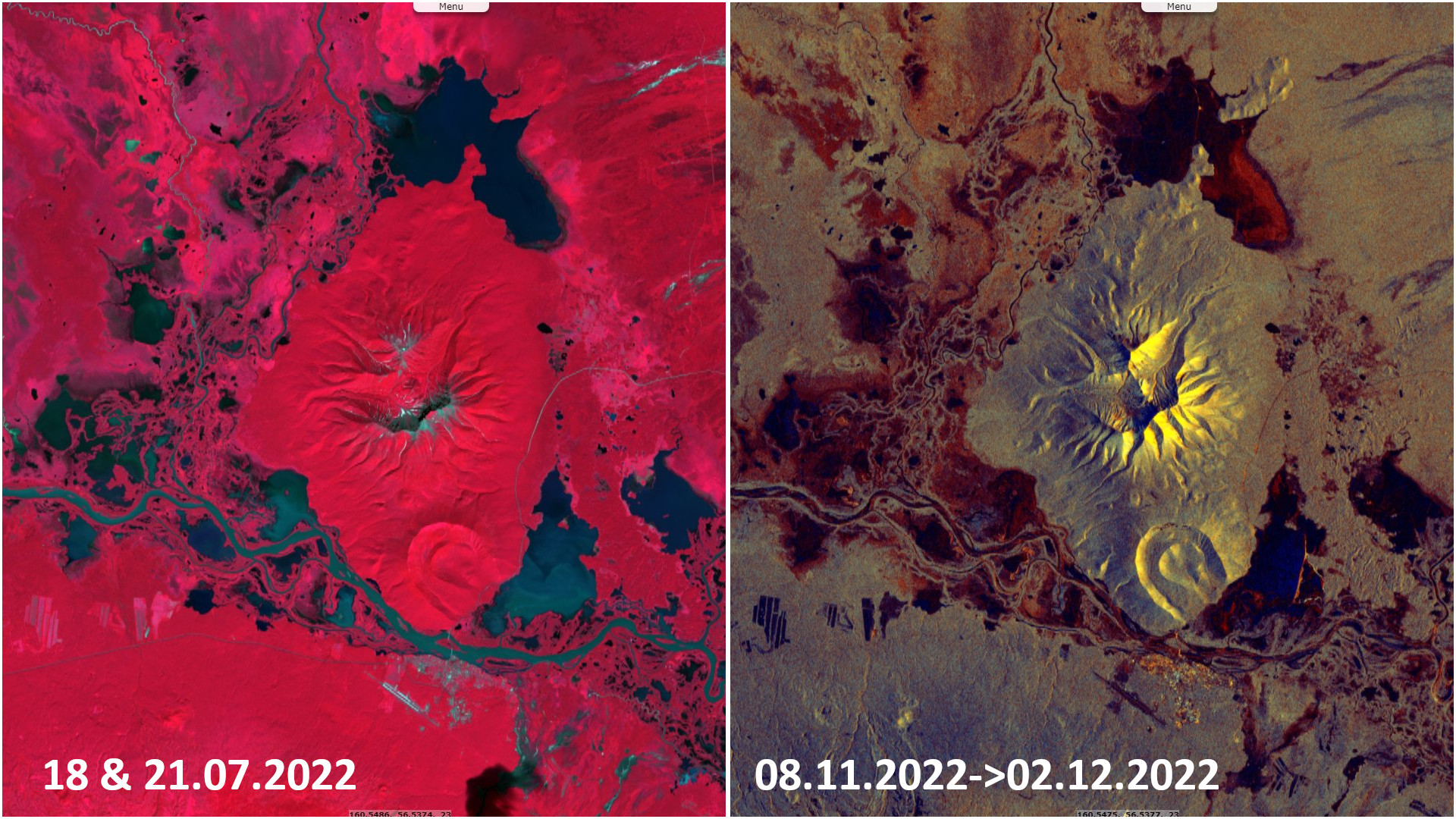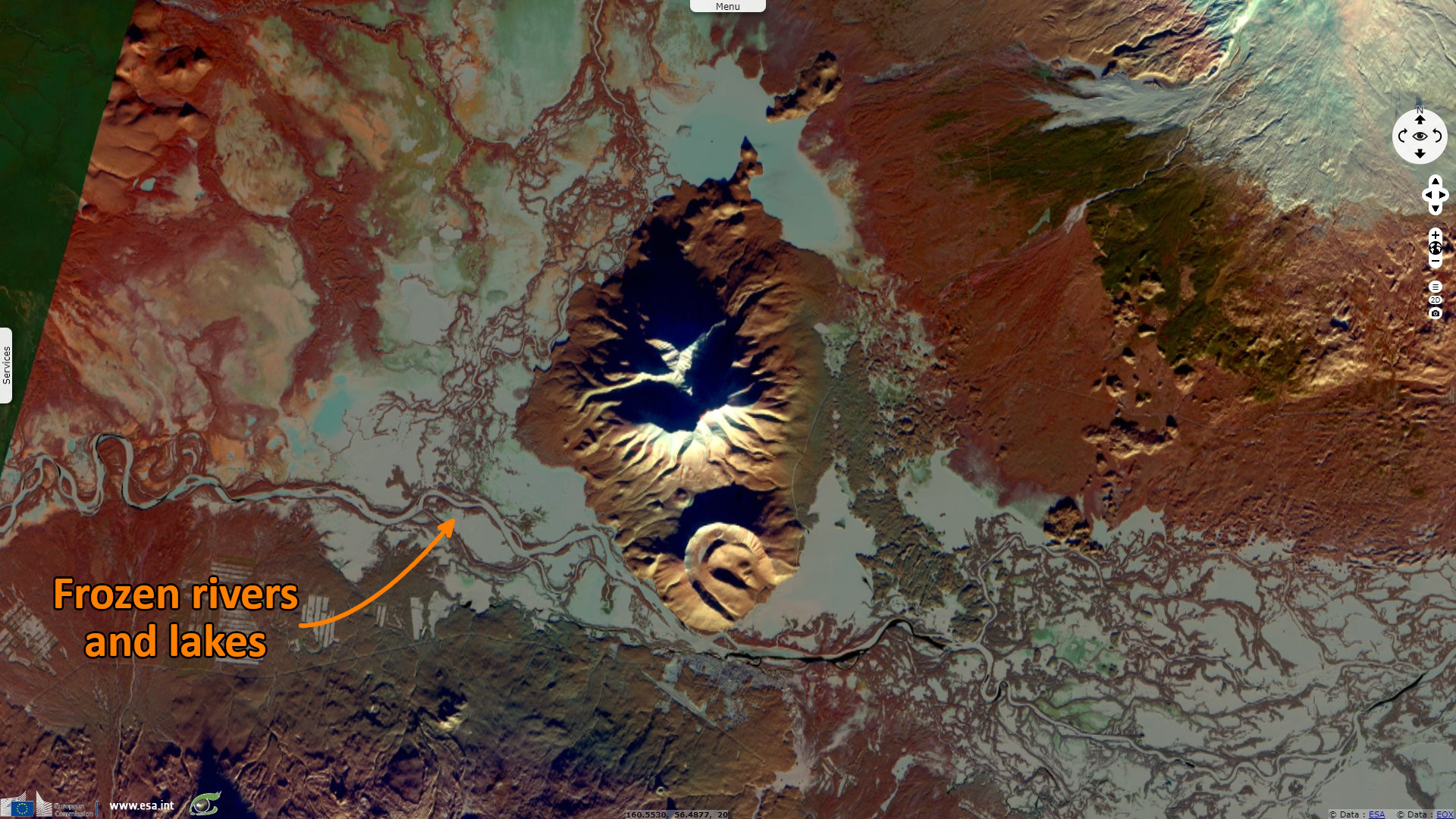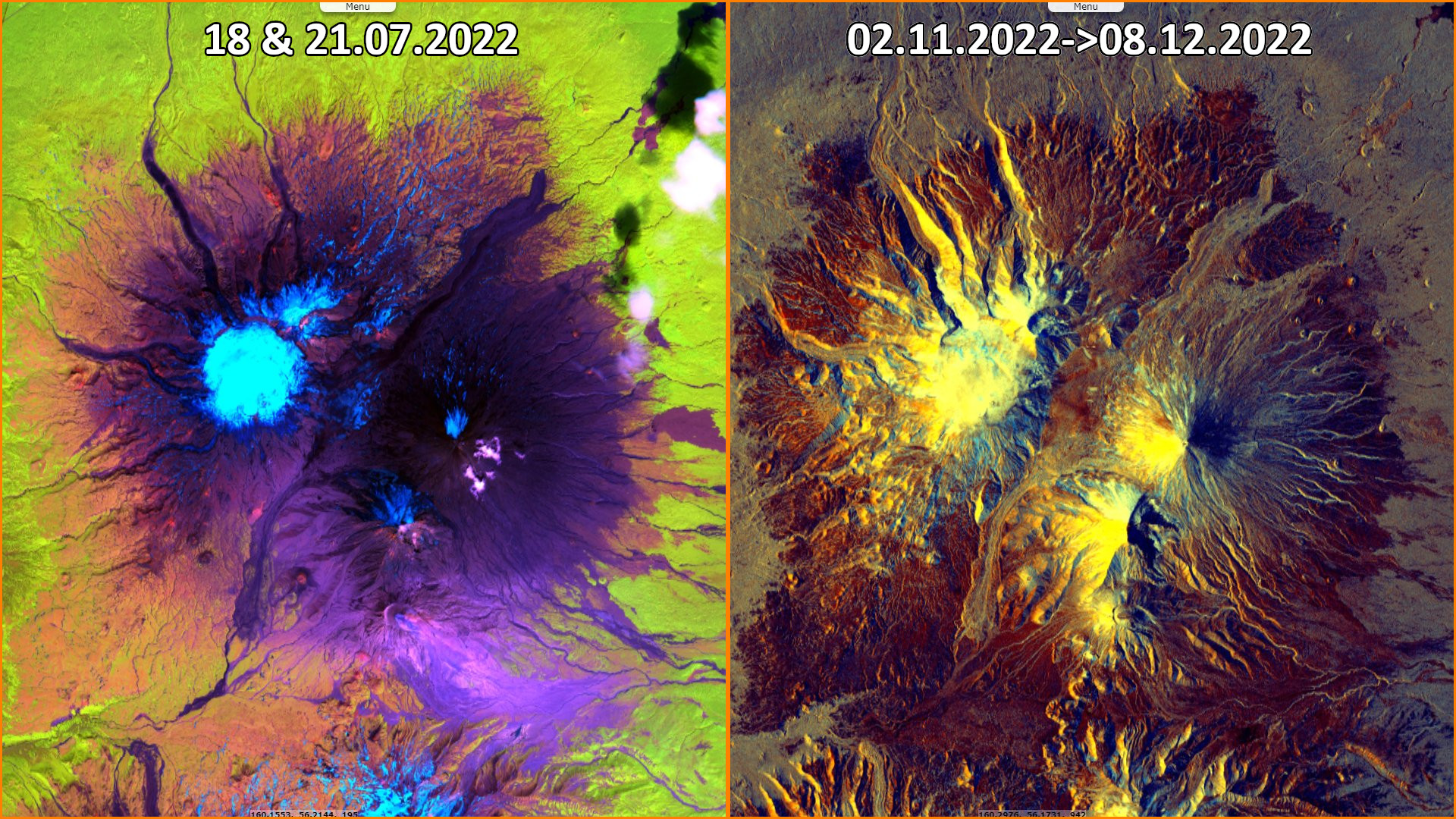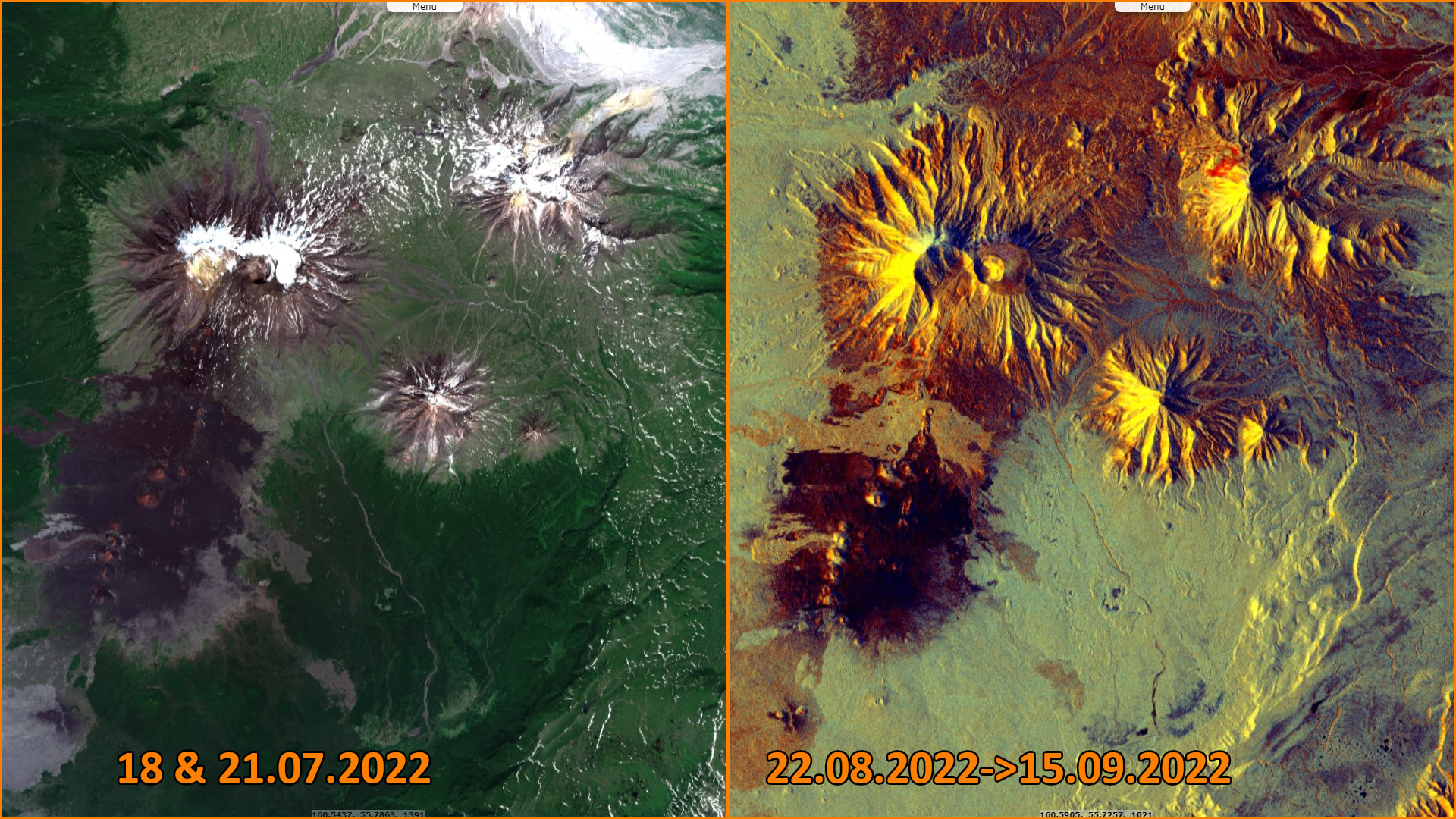Klyuchevskoy Nature park, volcanic belt of the Central Kamchatka Depression, Russia
Sentinel-2 MSI acquired on 18 July 2022 at 00:26:09 UTC
Sentinel-2 MSI acquired on 21 July 2022 at 00:36:09 UTC
Sentinel-1 CSAR IW acquired on 22 August 2022 from 07:00:47 to 07:01:16 UTC
Sentinel-1 CSAR IW acquired on 03 September 2022 from 07:00:48 to 07:01:17 UTC
Sentinel-1 CSAR IW acquired on 15 September 2022 from 07:00:48 to 07:01:17 UTC
Sentinel-2 MSI acquired on 21 July 2022 at 00:36:09 UTC
Sentinel-1 CSAR IW acquired on 22 August 2022 from 07:00:47 to 07:01:16 UTC
Sentinel-1 CSAR IW acquired on 03 September 2022 from 07:00:48 to 07:01:17 UTC
Sentinel-1 CSAR IW acquired on 15 September 2022 from 07:00:48 to 07:01:17 UTC
Keyword(s): Geohazard, volcano, geology, biodiversity, natural reserve, national park, UNESCO World Heritage Park, Russia, Pacific Ring of Fire, Pacific Ocean
A site dedicated to natural sites in Kamchatka describes the Klyuchevskoy Nature park as follows: it was created in 1999 and included into the UNESCO World Cultural and Natural Heritage List. The park covers an area of 376 000 ha with Eurasia’s most grand and active Klyuchevksaya group of volcanoes in its center. It consists of 13 volcanoes, including 4 active (Klyuchevskoy, Plosky Tolbachik, Besymyanny, Ushkovsky) and 9 extinct ones (Kamen, Krestovsky, Ostry Tolbachik, Ovalnaya Zimina, Ostraya Zimina, Bolshaya Udina, Malaya Udina, Sredny, and Gorny Zoub)."
"Kluchevskoy volcano (4750 m) is Eurasia’s highest. It is one of the greatest sights to see. Gigantic size of volcanoes and their dense concentration on a relatively small area, brightly expressed and various occurrence of active volcanic processes attract scientists, tourists and mountain climbers."
"Space between Klyuchevsky, Kamen and Ushkovsky volcanoes is filled with ice and glacier snow. Slopes of Krestovsky, Ushkovsky, Kamen volcanoes are also covered with permanent glaciers which give birch for many of mountain streams creating a network of small and big waterfalls and rivers. These rapid torrents wash huge caves in glaciers and cut canyons in solid basaltic rocks. There are 47 glaciers in the park with an area of 269 km²."
"In 1975, a number of cracks of 200 to 600 meters appeared on a reindeer pasture and lava started gushing from them. In a month, three cones of up to 300 m high have grown above the centers of gushing and all blooming area was strewed with slag and ashes up to 10 meters. During a year, lava flows covered an area about 40 km². Eruptions like that happen one time in a century. Just six similar places are known in the world. Klyuchevskoy Nature park One of them is located in Klyuchevskoy Nature Park. Now it is a region of intensive scientific research."
The UNESCO World Heritage Committee inscribed "the Volcanoes of Kamchatka as one of the most outstanding examples of the volcanic regions in the world on the basis of natural criteria. The site contains a high density of active volcanoes, a variety of different types and a wide range of volcanic features. The Peninsula location between a large continental landmass and the Pacific Ocean also exhibits unique characteristics with major concentrations of wildlife."
"The addition of Kluchevskoy Nature Park as the sixth component of the site further adds to the overall coverage of the range of Kamchatka's natural features. The addition to the site clearly meets criterion (viii) in its own right as an outstanding example of geological processes and landforms and therefore contributes in a very significant way to the expanded site as a whole meeting criterion (viii)."
"Criterion (ix) : The expanded site is also biologically analogous to six islands and its geographic location between a large continental landmass and the Pacific Ocean has given it unique characteristics. Natural processes continue with on-going volcanic activity and colonisation. Kluchevskoy Nature Park contributes significantly to the expanded site as a whole meeting criterion (ix)."
"Criterion (vii): The Kamchatka Volcanoes is a landscape of exceptional natural beauty with its large symmetrical volcanoes, lakes, wild rivers and spectacular coastline. It also contains superlative natural phenomena in the form of salmon spawning areas and major concentrations of wildlife (e.g. seabird colonies) along the coastal zone of the Bering Sea. Kluchevskoy Nature Park contributes very significantly to the site as a whole meeting criterion (vii)."
The volcanic belt of the Central Kamchatka Depression can also be interpreted as a rear zone relative to the frontal one of Eastern Kamchatka. G. P. Avdeiko analyses the content of the unusual basalts of the Klyuchevskoy region in the article Evolution of the Kurile-Kamchatkan Volcanic Arcs and Dynamics of the Kamchatka-Aleutian Junction: "Magnesian basalts (Mg# 80–88) of the northern volcanoes (Shiveluch, Kharchinsky, Zarechny) have lower Ca, higher Sc, Y, Yb concentrations and higher K/Ti, La/Yb, Ni/Sc, and La/Ta ratios compared to the similar ones from the Kluchevskaya group of volcanoes. Most of the volcanic rocks of this region are characterized by high alkalinity and high LILE (Large Ion Lithophile Elements) and LREE (Light Rare Earth Elements) concentrations. Volcanoes of the Kluchevskaya group are characterized by a very high productivity, supplying about 1/3 of volume of the volcanic material erupted by all Kamchatka volcanoes and two times more than east Kamchatka volcanoes during Holocene time [Volynets et al., 1998; Kozhemyaka, 2000]. These unusual features of volcanism reflect the unique geodynamic conditions of the Kamchatka-Aleutian junction."
